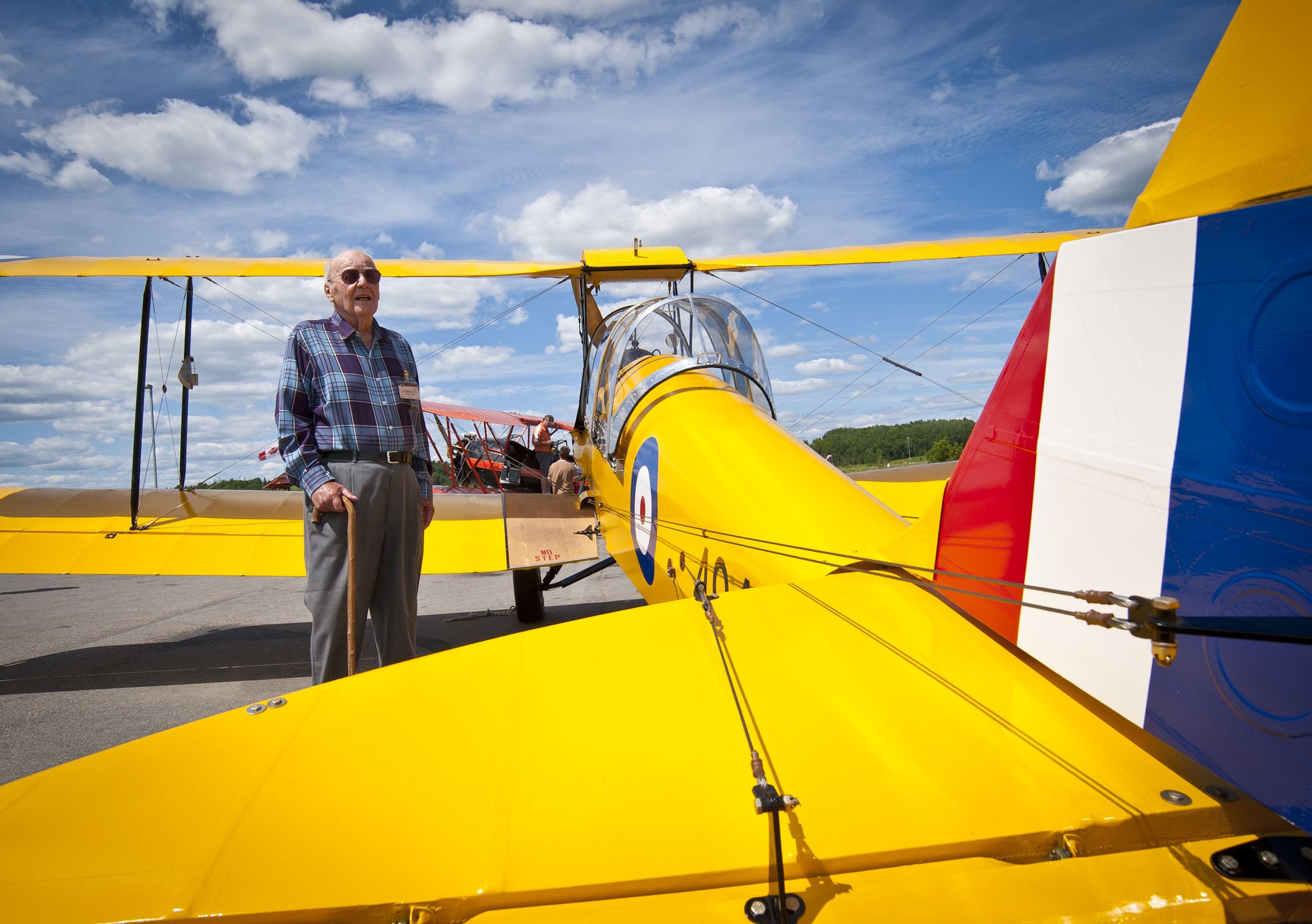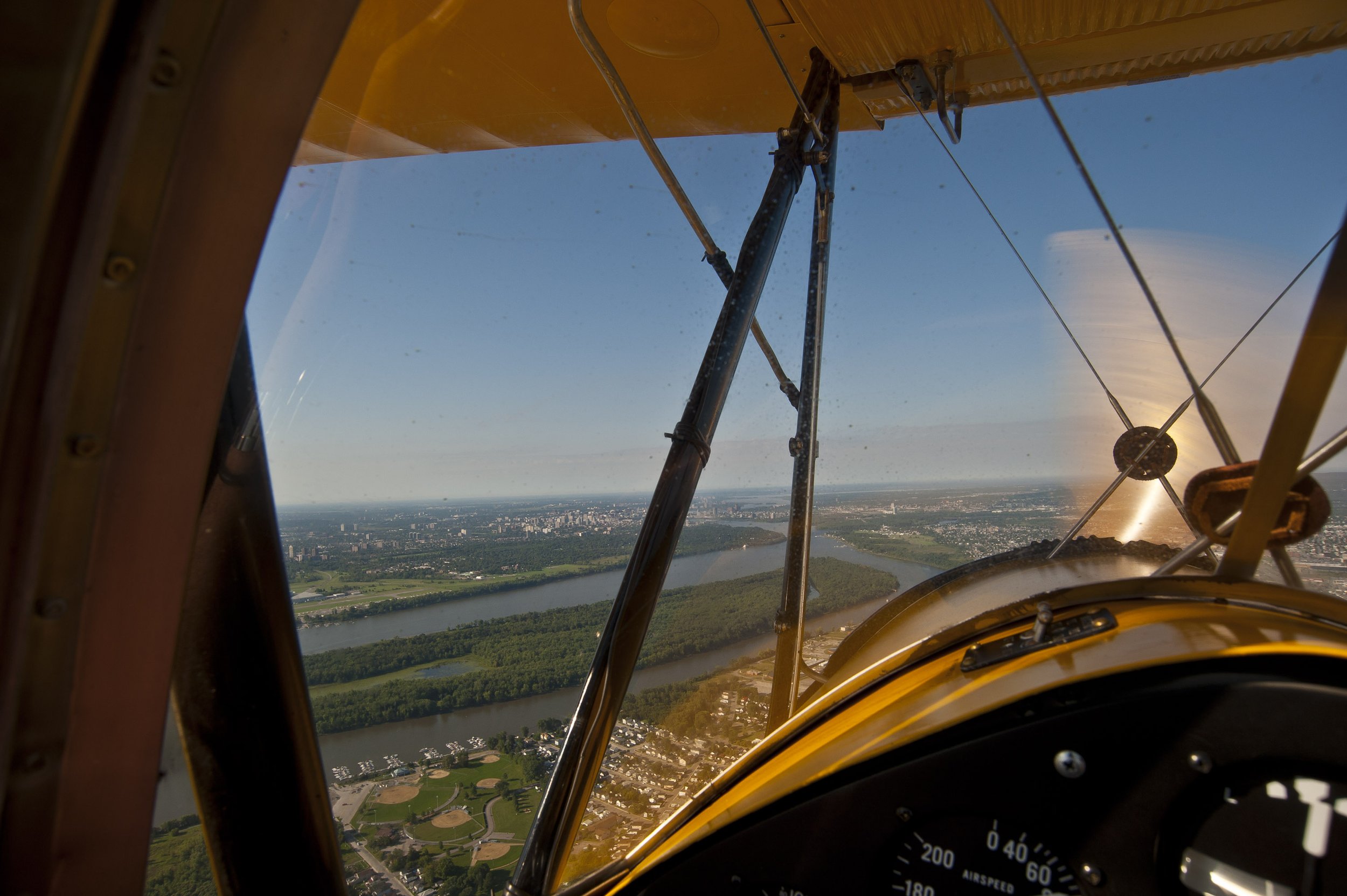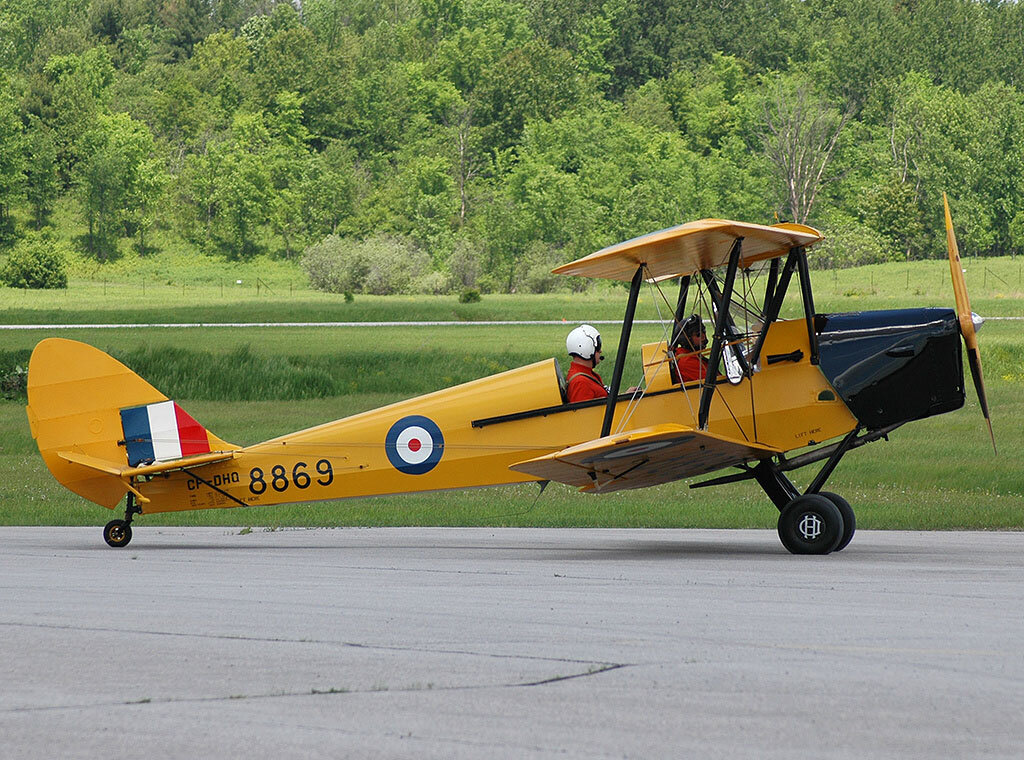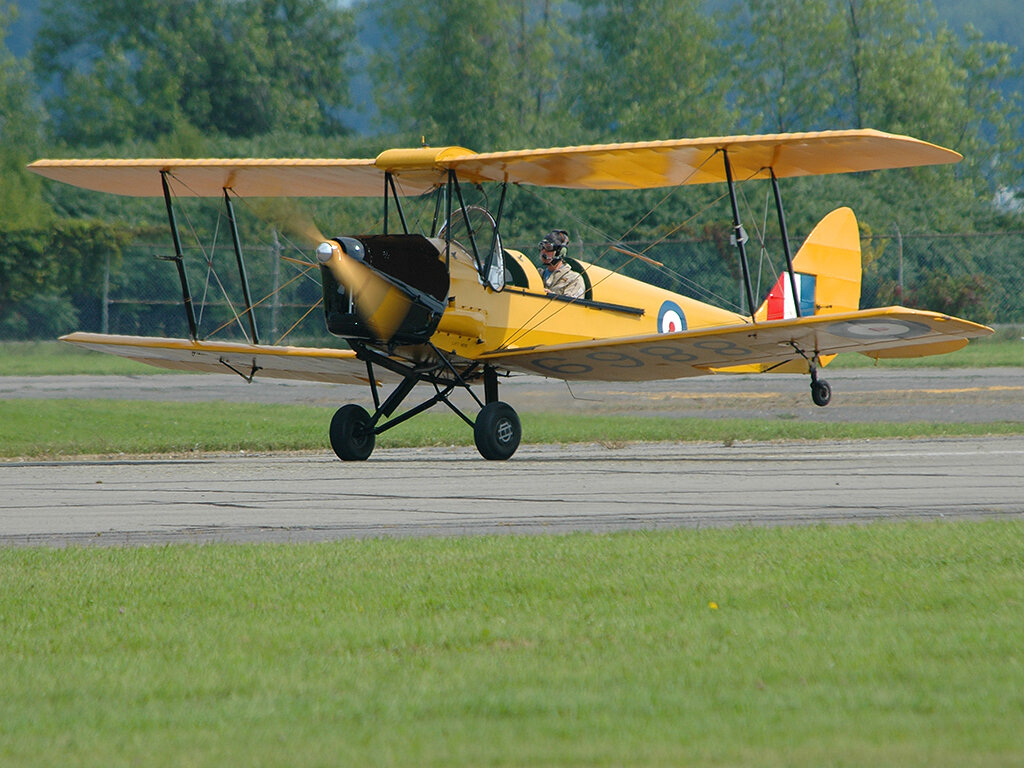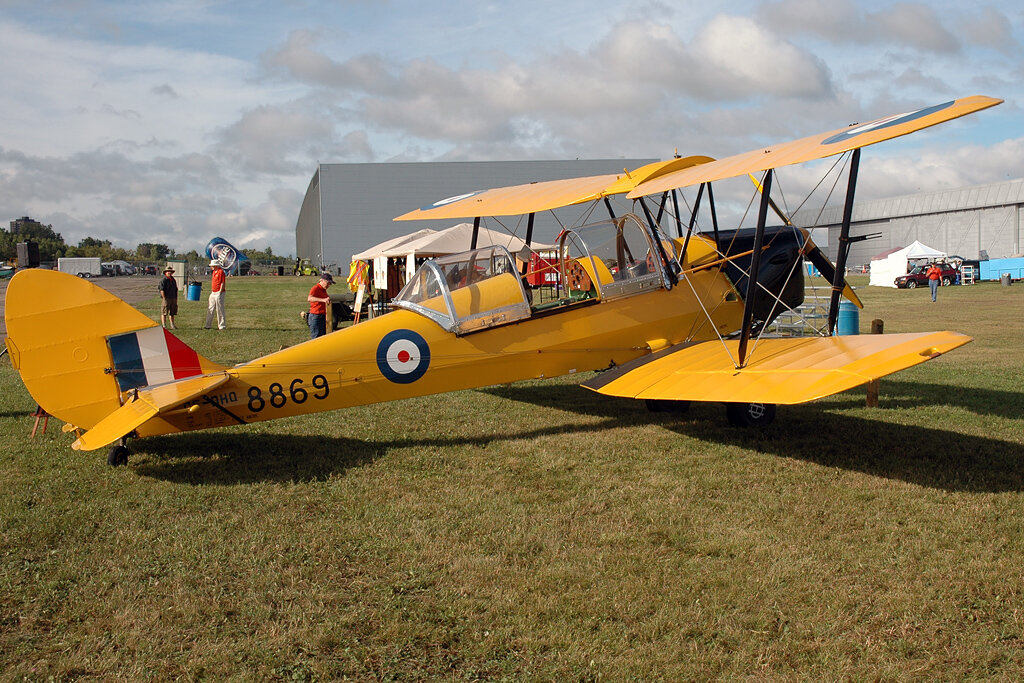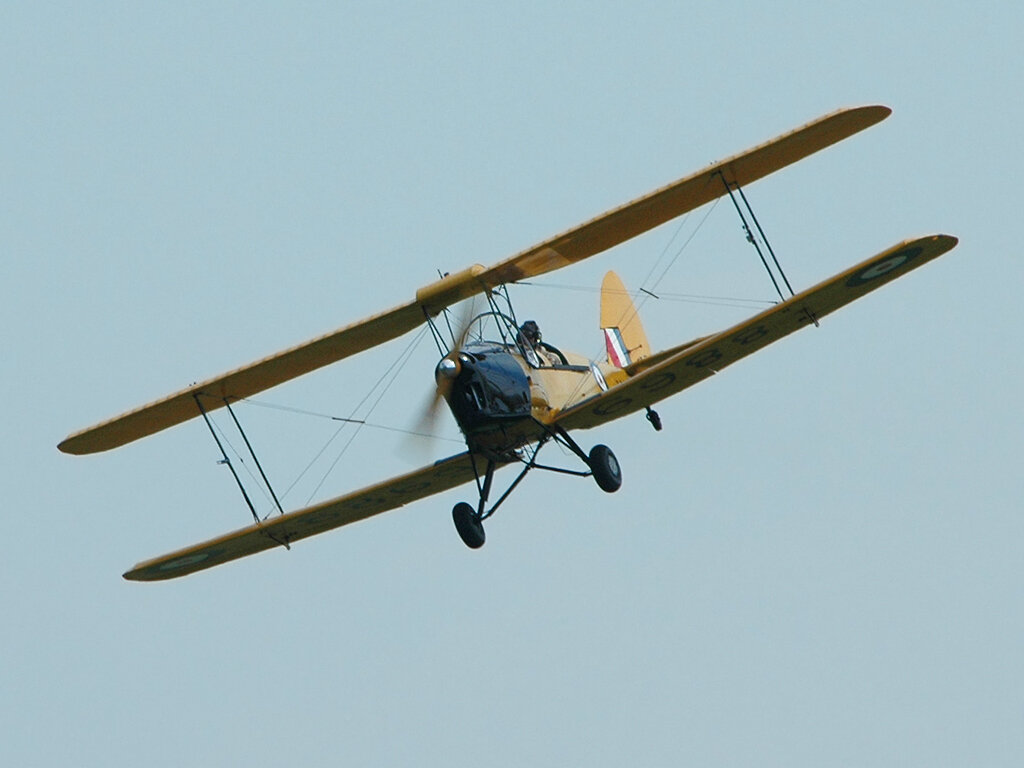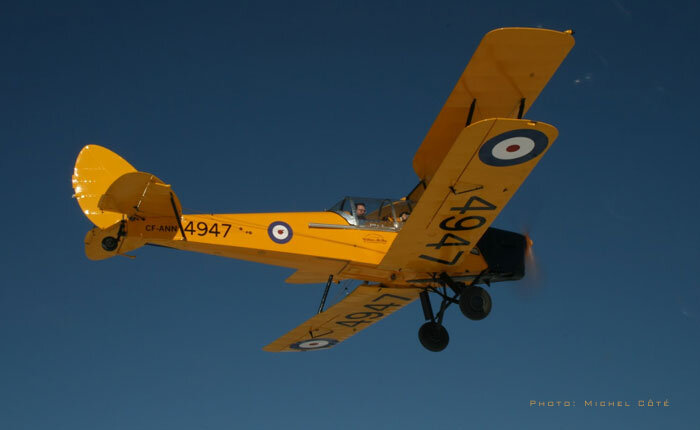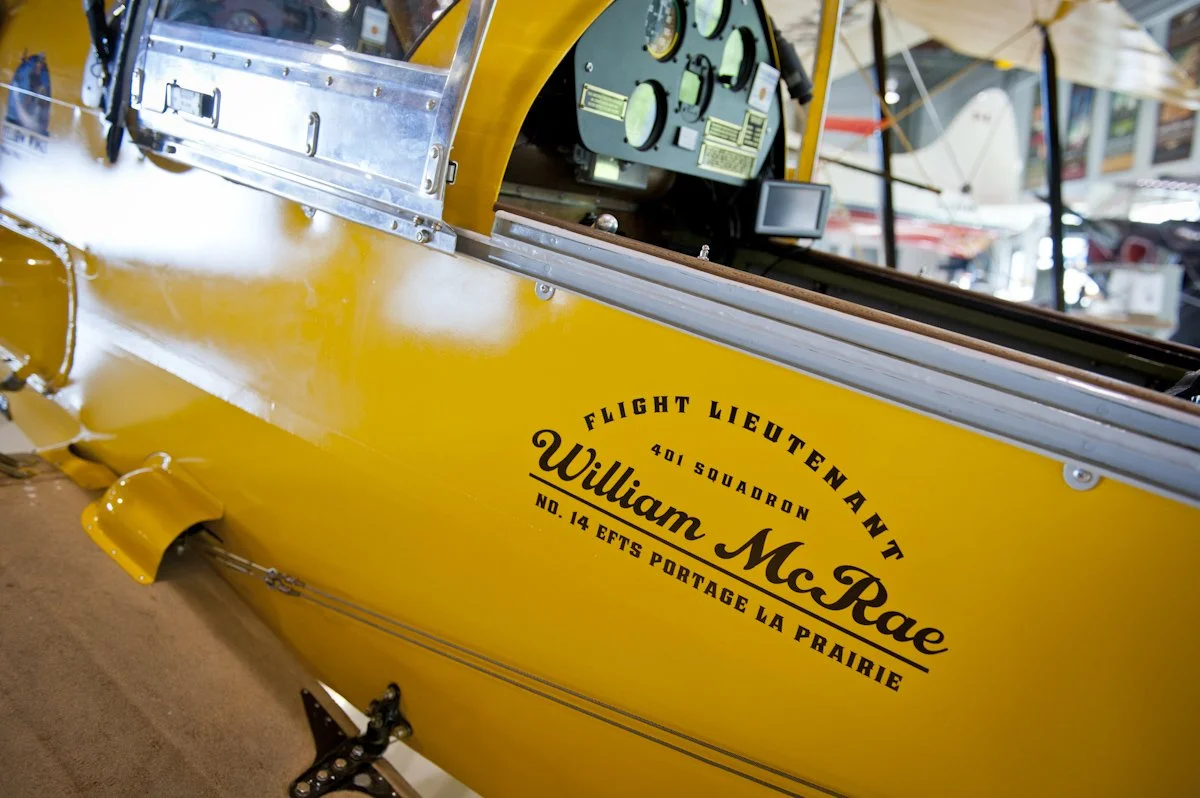
DH-82 TIGER MOTH
RICHARD MALLORY ALLNUTT PHOTO
de Havilland (Canada) DH-82 Tiger Moth
Vintage Wings has operated two Tiger Moths over the years — RCAF serial numbers 8869 and 4947. The latter was dedicated to Vintage Wings’ own William Robertson (Bill) McRae, a Second World War Spitfire fighter pilot. 4947 now resides at the Canadian Warplane Heritage Museum where it continues to honour McRae and all RCAF pilots who trained on them.
The Tiger Moth was the primary flying trainer used to instruct new pilot recruits of the British Commonwealth Air Training Plan at training bases across Canada. Descended from a line of lightweight British general aviation and training aircraft, the Tiger Moth was initially built by de Havilland in England. Soon, de Havilland subsidiaries were churning out Tiger Moths in Canada, Australia, New Zealand, Portugal, Norway and Sweden. More than 1,500 were built at de Havilland Canada’s Downsview facility. Canadian Tiger Moths had modifications to the basic design to enable them to function in more difficult conditions. Most evident was the enclosed and heated cockpit that enabled training to continue though late autumn and winter - virtually impossible in an open cockpit airplane. Also, wheel brakes and a tail wheel were added to take advantage of surfaced runways.
The Tiger Moth’s gentle flying characteristics, agile spirit and simple construction made for an excellent basic trainer. Fledgling pilots started on the Tiger Moth and then moved on to the Harvard advanced trainer. After the war, surplus Tiger Moths were made available to flying clubs as training aircraft, some for as little as $25. Hundreds continue to fly today around the world. Its simple construction and maintainability keep it airworthy 3/4 of a century after its first flight.
Peter Handley Photo
Peter Handley Photo
Peter Handley Photo
Peter Handley Photo
Peter Handley Photo
CF-ANN, Peter Handley Photo
CF-DHQ Pierre Langlois Photo
CF-DHQ Pierre Langlois Photo
CF-DHQ J. P. Bonin Photo
CF-DHQ Pierre Langlois Photo
CF-DHQ J. P. Bonin Photo
CF-DHQ Pierre Langlois Photo
CF-ANN
CF-ANN
CF-ANN
CF-ANN Richard Mallory Allnutt Photo
CF-ANN Michel Coté Photo
Peter Handley Photo
Tiger Moth CF-ANN in Moncton. Yellow Wings Photo
CF-ANN Wayne Giles Photo
CF-ANN Wayne Giles Photo
CF-ANN J. P. Bonin Photo
CF-ANN Richard Mallory Allnutt Photo
CF-ANN Gus Coruso Photo
CF-ANN Richard Mallory Allnutt Photo
CF-ANN Richard Mallor Allnutt Photo


